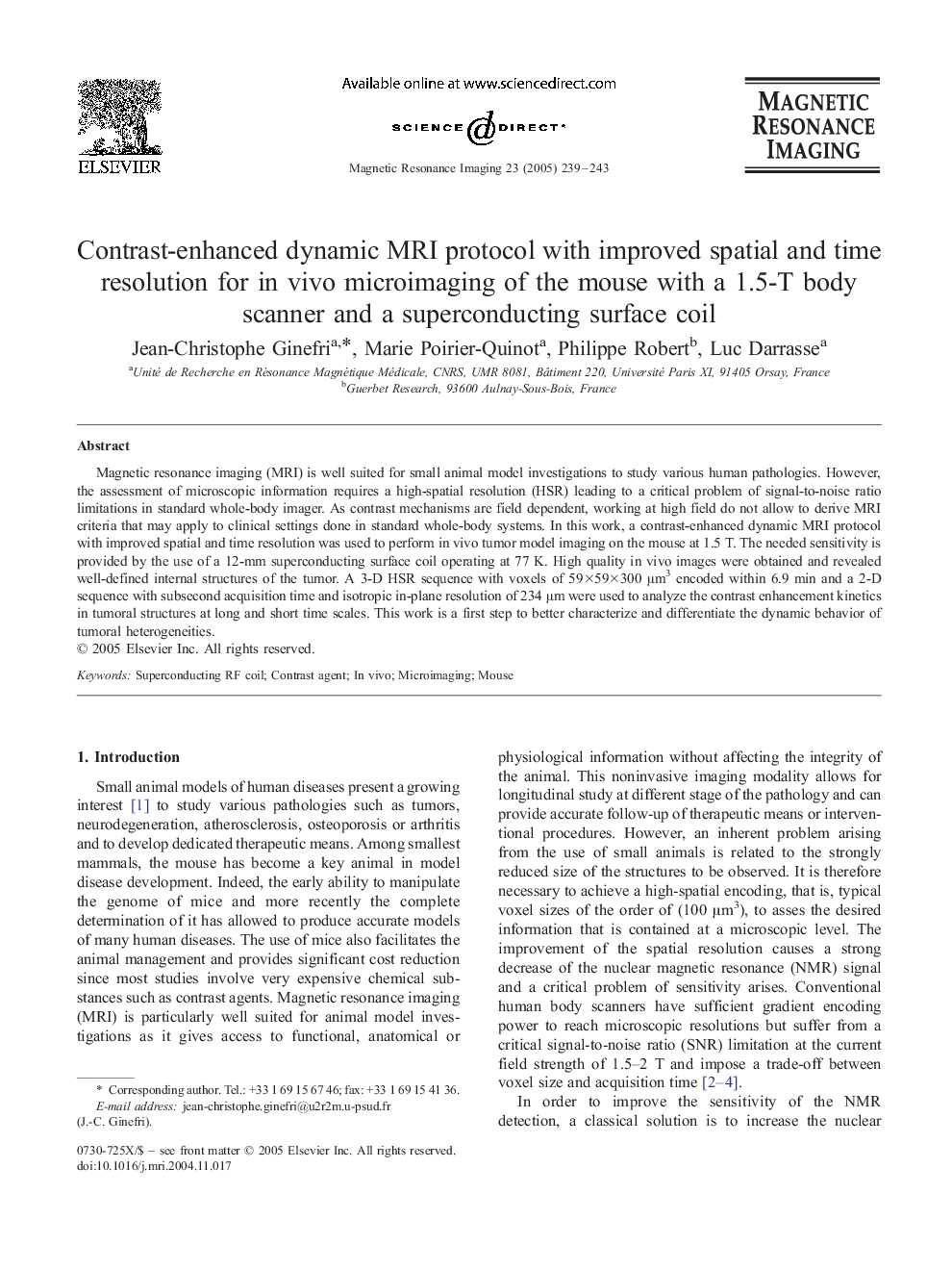| Article ID | Journal | Published Year | Pages | File Type |
|---|---|---|---|---|
| 10712976 | Magnetic Resonance Imaging | 2005 | 5 Pages |
Abstract
Magnetic resonance imaging (MRI) is well suited for small animal model investigations to study various human pathologies. However, the assessment of microscopic information requires a high-spatial resolution (HSR) leading to a critical problem of signal-to-noise ratio limitations in standard whole-body imager. As contrast mechanisms are field dependent, working at high field do not allow to derive MRI criteria that may apply to clinical settings done in standard whole-body systems. In this work, a contrast-enhanced dynamic MRI protocol with improved spatial and time resolution was used to perform in vivo tumor model imaging on the mouse at 1.5 T. The needed sensitivity is provided by the use of a 12-mm superconducting surface coil operating at 77 K. High quality in vivo images were obtained and revealed well-defined internal structures of the tumor. A 3-D HSR sequence with voxels of 59Ã59Ã300 μm3 encoded within 6.9 min and a 2-D sequence with subsecond acquisition time and isotropic in-plane resolution of 234 μm were used to analyze the contrast enhancement kinetics in tumoral structures at long and short time scales. This work is a first step to better characterize and differentiate the dynamic behavior of tumoral heterogeneities.
Related Topics
Physical Sciences and Engineering
Physics and Astronomy
Condensed Matter Physics
Authors
Jean-Christophe Ginefri, Marie Poirier-Quinot, Philippe Robert, Luc Darrasse,
